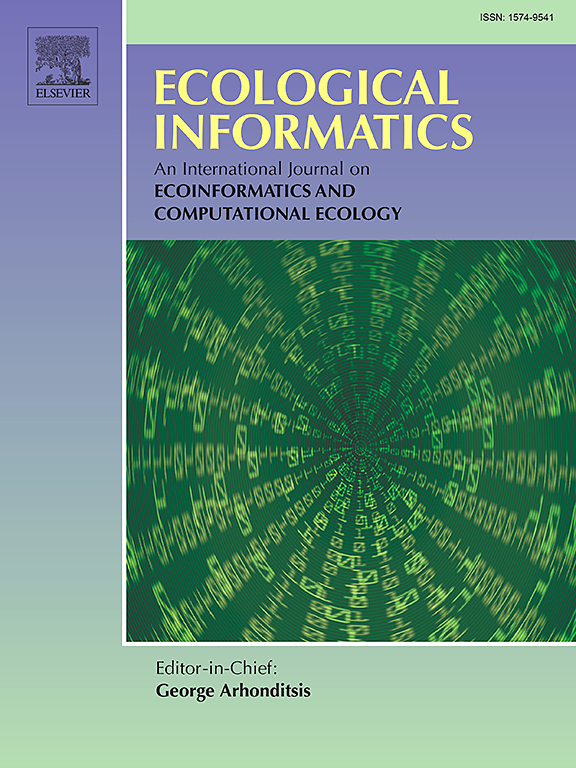Spatiotemporal patterns of desertification sensitivity and influencing factors across the Western Inner Mongolia Plateau, China
IF 5.8
2区 环境科学与生态学
Q1 ECOLOGY
引用次数: 0
Abstract
Desertification remains a critical global ecological and environmental challenge that threatens sustainable development. Although our understanding of desertification dynamics and their underlying drivers has improved, continued research is needed due to the region-specific nature of these processes. This study focuses on the Western Inner Mongolia Plateau in China as a case study to examine the evolution of desertification and its driving factors using a multifaceted approach, including the Mediterranean Desertification and Land Use (MEDALUS) model. Results show that the desertification sensitivity index (DSI) across the plateau ranged from 1.12 in prairie regions to 1.87 in desert areas, with a spatial gradient decreasing from west to east. Overall, the DSI exhibited a declining trend over the study period, though some areas showed localized degradation. Between 2001 and 2020, the DSI decreased across approximately 64 % of the plateau, with approximately 23 % (primarily desert regions) experiencing a significant reduction. In contrast, 36 % of the area, particularly the southeastern grasslands, saw an increase in DSI. Among the examined factors, seven—precipitation, normalized difference vegetation index (NDVI), leaf area index(LAI), drought resistance, erosion protection, fire risk, and land-use intensity—demonstrated high explanatory power greater than 0.6, highlighting their significant positive or negative impact on desertification. Additional factors such as temperature, sunshine duration, and potential evapotranspiration also influenced desertification, albeit to a lesser extent. Notably, interactions among these variables played a crucial role in shaping desertification trends. Addressing desertification, therefore, requires integrated strategies that account for the complex interplay of soil, climate, vegetation, and land management.
内蒙古高原西部沙漠化敏感性时空格局及影响因素
荒漠化仍然是威胁可持续发展的重大全球生态和环境挑战。虽然我们对荒漠化动态及其潜在驱动因素的了解有所改善,但由于这些过程的区域特殊性,需要继续进行研究。本研究以内蒙古西部高原为例,采用地中海沙漠化与土地利用(MEDALUS)模型,从多个角度探讨了内蒙古西部高原沙漠化演变及其驱动因素。结果表明:青藏高原沙漠化敏感性指数(DSI)在草原地区为1.12,荒漠地区为1.87,从西向东呈递减趋势;总体而言,DSI在研究期间呈现下降趋势,但部分地区出现局部退化。2001年至2020年间,青藏高原约64%的DSI下降,其中约23%(主要是沙漠地区)的DSI显著下降。相比之下,36%的地区,特别是东南部草原,DSI增加。7个因子中,降水、归一化植被指数(NDVI)、叶面积指数(LAI)、抗旱性、水土流失防护性、火灾风险和土地利用强度的解释能力均大于0.6,表明它们对沙漠化的正向或负向影响显著。温度、日照时数和潜在蒸散量等其他因素也影响荒漠化,尽管影响程度较小。值得注意的是,这些变量之间的相互作用在形成沙漠化趋势方面发挥了至关重要的作用。因此,解决荒漠化问题需要综合战略,考虑土壤、气候、植被和土地管理之间复杂的相互作用。
本文章由计算机程序翻译,如有差异,请以英文原文为准。
求助全文
约1分钟内获得全文
求助全文
来源期刊

Ecological Informatics
环境科学-生态学
CiteScore
8.30
自引率
11.80%
发文量
346
审稿时长
46 days
期刊介绍:
The journal Ecological Informatics is devoted to the publication of high quality, peer-reviewed articles on all aspects of computational ecology, data science and biogeography. The scope of the journal takes into account the data-intensive nature of ecology, the growing capacity of information technology to access, harness and leverage complex data as well as the critical need for informing sustainable management in view of global environmental and climate change.
The nature of the journal is interdisciplinary at the crossover between ecology and informatics. It focuses on novel concepts and techniques for image- and genome-based monitoring and interpretation, sensor- and multimedia-based data acquisition, internet-based data archiving and sharing, data assimilation, modelling and prediction of ecological data.
 求助内容:
求助内容: 应助结果提醒方式:
应助结果提醒方式:


